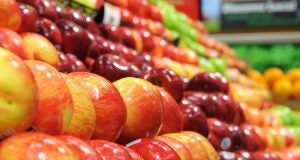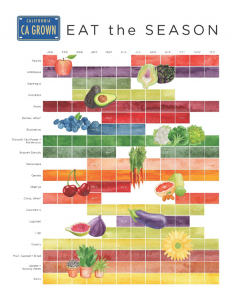Spring has nearly sprung — well at least in my home area of Florida it has. This means that a large variety of locally grown produce is soon to be available near you. Supporting local agriculture initiatives, no matter how small or how large, is an important step to maintaining agricultural industries throughout the entire United States. We must keep our farmers farming and support them — and our own economy — whenever feasible. Check out the hashtag #anf (America Needs Farmers) when you can.
Whether you purchase from the road-side farm stand, have a community-supported agriculture operation locally, or simply strive to purchase “grown in the U.S.” at the grocery store, you are making a positive impact on American agriculture. Current events related to pandemics, trade difficulties, and international conflicts should have illustrated to you just how fragile global trade can be. Therefore, we must encourage the growth and stability of our essential industries here in the United States.
One simple way you can support American agriculture is to buy American — and more and more people are clamoring for domestically grown food. Now, this isn’t to say that if you want grapes out of season you shouldn’t purchase them since they aren’t American grown, it’s more to say that when there is an option of American grown, that should be prioritized.

So how do you know if a product is grown in America? The easiest way is to look at the packaging, or for loose fruits/vegetables, check the tag/name placard. Unfortunately, mandated country of origin labeling on perishable products is only required of retailers who sell more than $230,000 worth of fresh or frozen in a calendar year. So you’re big grocery chains like Walmart, Winn-Dixie, Publix, Kroger, Meijer, and H-E-B must label the country of origin on their products, but a smaller local store won’t. However, your smaller stores are potentially more likely to know their supplier and the origin of the products than would employees at a larger chain who do not make purchasing decisions.
Check to see if your state has a marketing slogan indicating local products like California Grown, Fresh from Florida, or Jersey Fresh, as these can help you easily identify local products.
Another way we can attempt to purchase products grown in the United States or more locally to us is to keep in mind what products are in season while we’re shopping. In-season products are easier for retailers to get locally and therefore have a higher chance to be sold than imported products. Many states’ agriculture departments have ‘What’s in Season’ lists available to help you find what is being grown, harvested, and sold in your state during that month.

We can prioritize fruits and vegetables that are in season in our area on our grocery list that month and support local American farmers. Not sure how to use a certain vegetable? Buy it anyway! There are amazing resources that allow you to search recipes based on what ingredients you have in your fridge right now. I recommend trying them out! These apps and websites are a great way to try new things and reduce food waste in our households by using everything we have before it spoils.
Of course, all products are local to someone, so if you can’t find locally grown or grown in the United States products, you shouldn’t feel guilty about purchasing that apple in the middle of summer. Eating fresh, healthy foods is essential for our mind and body, regardless of where they originate from!
Michelle Miller, the Farm Babe, is a farmer, public speaker and writer who has worked for years with row crops, beef cattle, and sheep. She believes education is key in bridging the gap between farmers and consumers.



